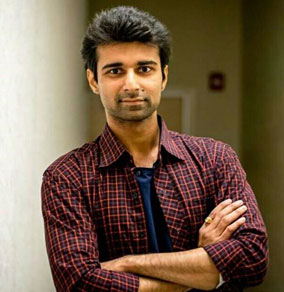Why don’t I remember who I am? What started this illusion?
When someone makes us realize our real identity, the revelation shocks us, but why? Why is it so easy to forget our soul even though we often hear it through discourses or read it in the scriptures?
Our five senses and the inauspicious surrounding environment (Aśubha Nimitta) have pushed us into the cobweb of the illusion in every birth. Whatever we see, hear, smell, taste, or touch is a material form, whereas the soul is formless, colorless, touchless, and odorless. It never comes into experience in our daily lives so quickly as any material knowledge. Thus, our soul has accumulated more Sanskāra (inborn faculties of the soul) of material knowledge through the five senses than self-realization since time immemorial. A seeker needs to shut off the window of senses to dive within the inner world as self-realization results from becoming Indriyātīta (deactivating the use of senses). Imagine a hypothetical scenario where since birth, no one gave us an identity (name) to live by and just repeatedly taught only one reality that we are a free and virtuous soul unbounded by the web of relations. Hence, there wouldn’t have formed any memory of worldly ties or physical identity. Thus, with time, the memory of our real identity would have been so strongly registered in our minds that even though the five senses would push us to indulge in material experiences, our self-realization would have remained uncompromised. But why did this not happen?
Unfortunately, since birth, mostly everyone around us lacked a strong sense of self-realization, and thus we also grew up alongside them, imitating the same wrong belief and practices. Additionally, since birth, we got so trained to acquire happiness through our senses that we never thought of any other possibilities of eternal happiness. Thus, even when one tries to sit through meditation by shutting off the five senses, one feels uneasy due to being deprived of sensual pleasures and happiness.
Why does a soul not attain self-realization so easily?
Bhagavāna Mahāvīra’s first Dēśanā has been compiled in the form of Shree Ācharaṅga Sutra. The importance of identifying one’s true form is clearly visible as he showed the right path to self-realization in the first Gāthā itself.
A soul, transmigrating since eternity, can attain self-realization by three means:
सहसम्मइयाए परवागरणेणं अण्णेसिं वा अंतिए सोच्चा
सहसम्मइयाए: Self-realization manifests from within (E.g., Jātismaraṇa Jñāna)
परवागरणेणं: Self-realization manifests with the help of enlightened souls (E.g., Tirthaṅkara, Guru)
अण्णेसिं वा अंतिए सोच्चा – Self-realization manifests through other sources (E.g., with the help of a Samakitī soul). In this 5th Arā, a soul is unfortunate to attain the presence of a Tirthaṅkara, yet fortunate enough to attain the divine auspice of Guru or ascetics who carry the Śrutajñāna of Tirthaṅkaras. To attain self-realization, one has to melt one’s ego and accept the refuge of a Guru, as only the one who has attained self-realization and is living by it every moment can make others realize their true identity.
How do I know I am a soul practically?
To discern between soul and body practically, it is imperative to know their inherent attributes. The primary attributes of a soul are Perception (Darśana) and Knowledge (Jñāna). Thus, even though the soul is imperceptible to the eyes, it can be known and experienced through inferential knowledge (Anumāna pramāṇa). Just like if there is smoke, we can infer that there must be a fire; Similarly, that which contains attributes of Jñāna and Darśana is a soul.
We experience the soul’s presence in every moment but fail to acknowledge it. E.g., I am eating; I am sleeping; I am talking. This “I” consciousness in every action is nothing but the indirect experience of the soul. Still, we often mistake it for our physical existence (body or mind) because the knowledge (soul’s attribute) of these actions (eating, sleeping, talking) is only possible due to the presence of the soul, as a dead body can not perceive anything.
When our “I” consciousness is wrong, our “My” consciousness will also be wrong automatically. If carefully contemplated, the “My” word indicates a relation between the self and an object (E.g., My body, My house, etc.). When we commonly say, “My body,” it proves that having a body (My body) is different than being a body (Me body). Similarly, a “human being” means a being (soul) currently embodied in a human format. Inherent attributes like simplicity, humility, forgiveness, and satisfaction are traits of a soul in addition to knowledge and perception. Thus, whenever we experience these traits, our soul has been awakened for the moment, and when these traits are lacking, the body’s identity is living in the moment. Thus, the manifestation of these traits is the simplest way of awakening our self-realization and dissolving the existence of our physical identity.
How do I retain the understanding of self-realization in every moment? After knowing the real “I,” one should have the prudence of accepting and discarding. Accept what belongs to the soul (right perception and knowledge) and cut back from all pursuits related to physical identity (worldly affairs, sensual pleasures, etc.). Always question everything you do – Is food needed for my soul or body? What is the virtue of my soul – Peace or Anger? Will worldly attachments bring me closer to my soul or malign it? Will this action bind karma and push me away from self-realization? Bhagwan Mahavir has said, “दिट्ठेहिं निव्वेयं गच्छेज्जा,” which means wherever you go and whatever you see, connect it with your soul and deepen your faith and self-realization. Always foresee the detrimental consequences of every action you are about to pursue. This will put brakes on wrongdoings and stabilize us in our true form. E.g., Reading about animal slaughtering, think, why do they suffer so much pain? Come to think of it; we realize that they must have forgotten their real identity in the past (“I” Wrong) and engaged in wrong actions (“My” wrong), leading to the accumulation of bad karma. We must become more attentive by witnessing such events. Another practice we can do is to refer to ourselves in the third person instead of the first person. E.g., John can engage in an internal monologue like, “John is eating right now, but I (soul) am just watching it; John is taking a bath, but I am just watching it; John is cooking, but I am just watching, etc. This internal monologue with dual personality practice will help discern between two identities and help cultivate Gñātādhrāstā bhāva (observing without indulging) in every action. Let the soul only be a witness to every step and emotion without indulging.
However easy it may sound; it cannot be achieved simply yet. Constant practice and efforts for self-realization are needed. Every few hours, disconnect from the material world and remind yourself of your identity for a few minutes, which is called Kāusagga.
Practical tips to make this Paryushan successful start the morning with the question, “Who am I? What am I doing here?”. Resolve not to talk with anyone unless you engage in self-dialogue first. Morning memory is fresh, so whatever you register will keep flashing throughout the day.
Request family members to call you soul (Ātmana) instead of name. This will help you recall your real identity now and then.
Focus more on inward practices like meditation filled with contemplation on discovering yourself than just rituals and penance.
Listen to the discourses and search for your Guru as Samvēga bhāva (Divine Love) is the first step to liberation.
May our spiritual journey begin with the quest of “Who am I?” and end with the ultimate state of just being an “I.”



Great information shared.. really enjoyed reading this post thank you author for sharing this post .. appreciated
كمورد موثوق به في صناعة البلاستيك ، أنشأ إيليت بايب Elite Pipe شراكات طويلة الأمد مع العملاء الذين يقدرون منتجاتهم عالية الجودة وأدائهم الموثوق.
Thank you for the auspicious writeup. It in fact was a amusement account it. Look advanced to more added agreeable from you! By the way, how could we communicate?